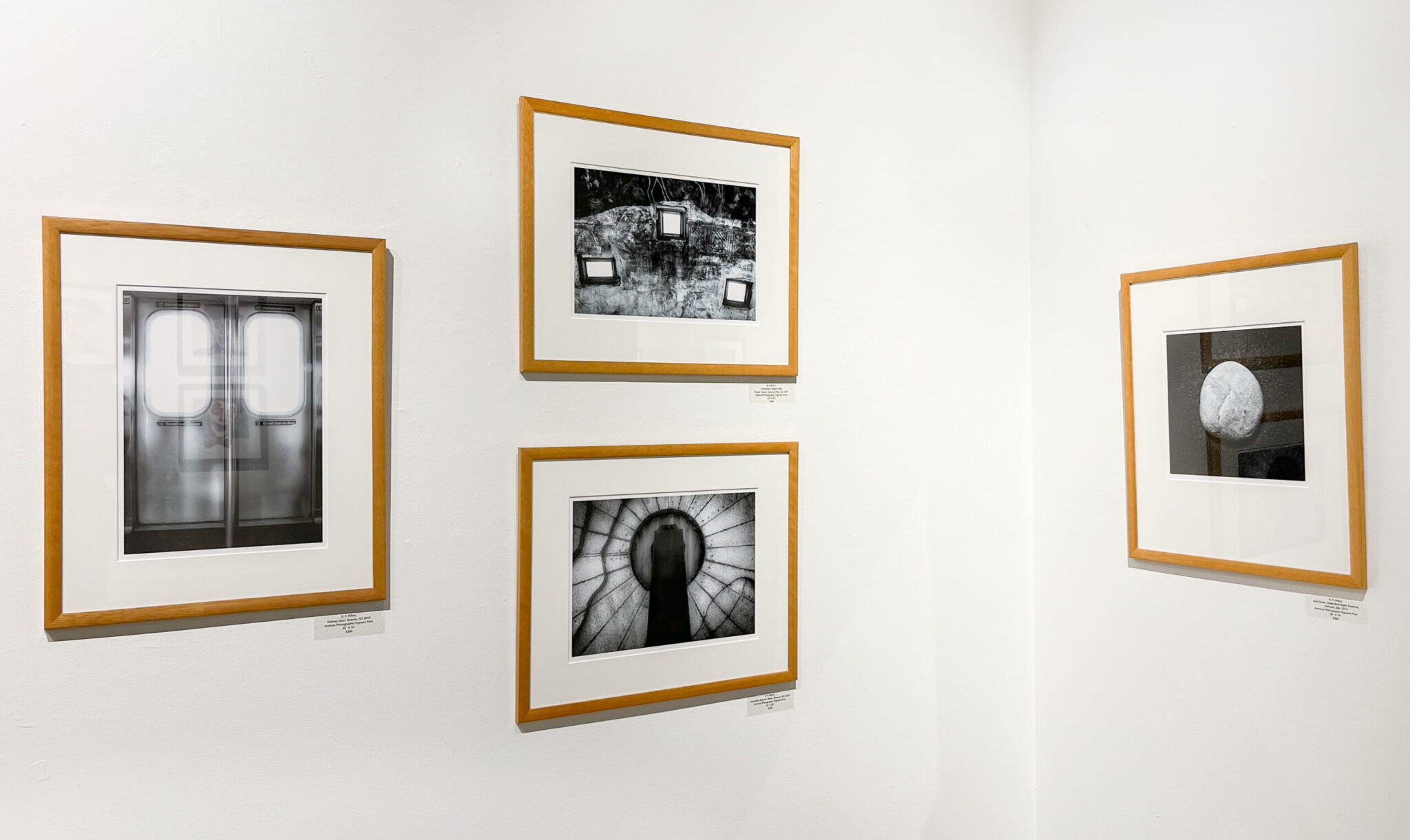A.I. and intentionality explored in two new Kehler Liddell Gallery Exhibitions
Two exhibitions, “Adjusted Intentions” by digital artist Brian Flinn and “Forces of Attraction” by R.F. Wilton, are on display at Kehler Liddell Art Gallery on Whalley Avenue.

Courtesy of R.F. Wilton
Inside the Kehler Liddell Gallery, two walls oppose each other.
One is covered in vibrant portraits, and the other showcases high-contrast black-and-white images of natural scenes, displaying the current exhibitions of Brian Flinn and R.F. Wilton.
Kehler Liddell is a local art gallery located on Whalley Avenue. This past June, the gallery celebrated its 20th anniversary. The ever-changing exhibitions at Kehler Liddell cover an array of artists and media. From Sept. 7 until Oct. 8, two exhibitions are on display: “Adjusted Intentions” by digital artist Brian Flinn and “Forces of Attraction” by photographer R.F. Wilton.
“[Art] is just another way of expressing who we are as people,” Flynn said. “This kind of work for me began and still remains kind of my own internal search, you know, just basically collecting things and putting them together and then [seeing] what these relationships say to me. What sense do I get out of it? It’s almost like writing a story and not knowing where the ending is going to be.”
“Adjusted Intentions” is an exhibition that focuses on how artificial intelligence can be a collaborator in the creative process. Flinn’s exhibition can be separated into four different “niches”: early illustrations, large-scale collage, or one of two different portrait series.
Flinn has been with Kehler Liddell since 2017, making “Adjusted Intentions” his fourth show at the gallery.
“It’s been a fantastic gallery with really great artists that just work to make sure we always have places to show and to support each other as you go through that process,” Flinn told the News.
Flinn began as an illustrator in the ’90s. It wasn’t until the early 2000s that he began to use computer technology, like Photoshop, in his practice.
The use of AI, Flinn said, has been considered a faux pas in many art circles. Flinn mentioned that several of his colleagues are adamantly against the use of AI. However, Flinn told the News that believes that it is going to be an invaluable tool for artists.
“I liken [the use of artificial intelligence in art] to what happened with digital photography for years,” he said. “There were a lot of arguments about how digital would never surpass film. The grain was too good.”
Upon entering the gallery, the first of Flinn’s works is a series of black-and-white scarecrow portraits. The photos began as illustrations that were then uploaded into DALL-E 2, an art-producing artificial intelligence software. DALL-E 2 enhances the photos, sometimes creating a new iteration of the original sketch, but Flinn makes the final adjustments.
Another section of Flinn’s exhibition is a series of 10 portraits. Like the scarecrow photos, the portraits begin with a collage that Flinn created called “685,000 reasons.”
“When I was playing with the generators, I would take some old work and some new works and just kind of throw them in there and see what happened. And sometimes the results were fascinating,” Flinn said.
“I felt the exhibit was creative and interesting,” Rachel Spells, who was visiting the gallery exhibition, said. “ I was intrigued by the piece done with the AI.”
The second exhibition currently on display at the gallery is R.F. Wilton’s “Forces of Attraction,” which spans 50 years: from the conception of his experimentation in photography to the present.
Wilton told the News that one of his favorite things to photograph is how substances and materials interact with light, or “hold the light” as he puts it.
Wilton’s works cover a wide range of subject matter. Many of the photographs on display were ones he took in Litchfield County, Connecticut, even in his own backyard.
When asked about the purpose of his work, Wilton told the News, “I’m retired now, so the only agenda I have to satisfy or adhere to is my own. Does this work? Do I respond to the work itself?”
The first few photos are all black-and-white photos of nature — a solar eclipse, a waterfall and mounds of snow. The works are reminiscent of Ansel Adams who Wilton named as one of his artistic influences. Each photo shows stark contrast as darks are juxtaposed with bright areas of white light.
“I meditate and so I kind of apply that sort of practice to my state of being when I’m looking to be engaged with the environment and let it reveal things to me and I can respond to these stimuli or phenomena more easily and more readily,” Wilton said. “These are the kind of things that tend to draw my attention when I’m in the world. And so consequently they’re subjects and approaches that I have repeated time and time again over the course of a 50-year engagement with photography.”
Other photos in Wilton’s exhibition “Forces of Attraction” showcase architecture and signage. One image of a colorful storefront resembles a page from “Where’s Waldo,” Wilton added. A close inspection of the work reveals layers within the photo: the storefront itself, the items found within the store and the reflection of the street in the glass.
“Sometimes the end result isn’t always, I think, what’s so important [with art], although that’s what drives you,” Flinn told the News. “It’s all about the creative process, that continual thing that just keeps going.”
Before taking up photography, Wilton worked as an enterprise software engineer for Dun & Bradstreet.







